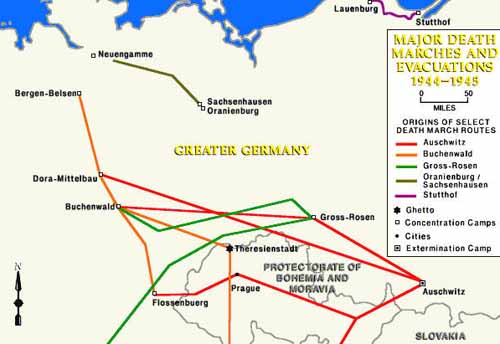Death Marches
Near the end of the war, when Germany's military force was collapsing, the Allied armies closed in on the Nazi concentration camps. The Soviets approached from the east, and the British, French, and Americans from the west. The Germans began frantically to move the prisoners out of the camps near the front and take them to be used as forced laborers in camps inside Germany. Prisoners were first taken by train and then by foot on "death marches," as they became known. Prisoners were forced to march long distances in bitter cold, with little or no food, water, or rest. Those who could not keep up were shot.

The largest death marches took place in the winter of 1944-1945, when the Soviet army began its liberation of Poland. Nine days before the Soviets arrived at Auschwitz, the Germans marched 60,000 prisoners out of the camp toward Wodzislaw, a town thirty-five miles away, where they were put on freight trains to other camps. About one in four died on the way.


